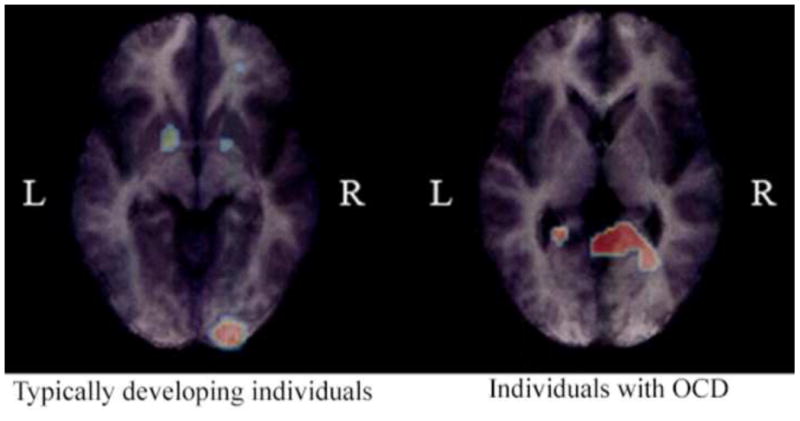Figure 3.

Functional imaging evidence from adults with obsessive-compulsive disorder (OCD). Typically developing adults and adults with OCD were given a procedural learning task (the serial reaction time task) during positron emission tomography scanning (Rauch et al., 1997). The two groups showed no behavioral differences on the task. However, their functional neuroanatomy differed. Whereas the typically developing group showed bilateral basal ganglia (and other) activation, the OCD group instead activated medial temporal lobe structures, including the hippocampus bilaterally. This suggests that OCD individuals may use declarative memory to fully compensate for at least some tasks that normally depend on procedural memory. L = left side; R = right side. Figure adapted from Rauch et al. (1997).
